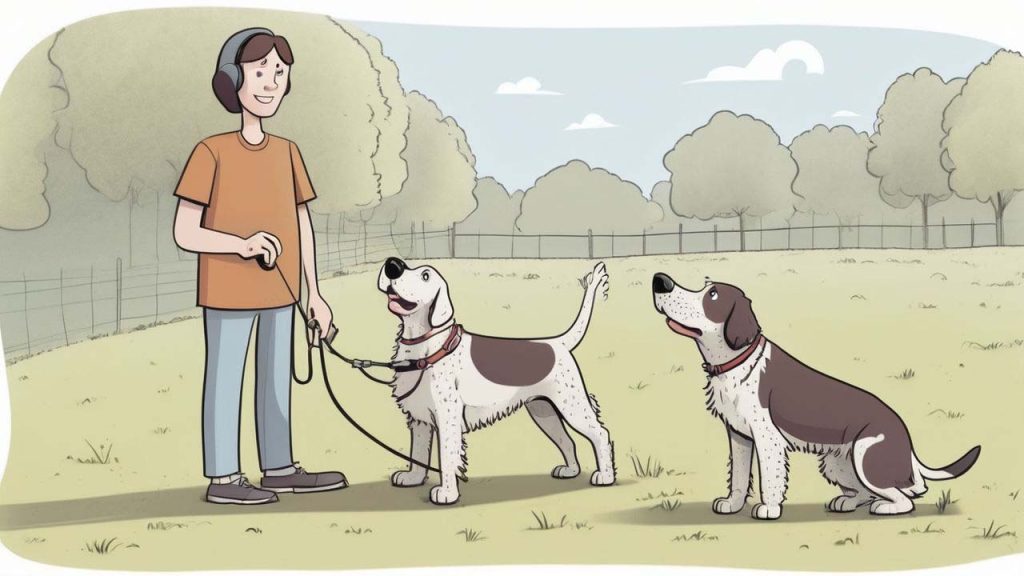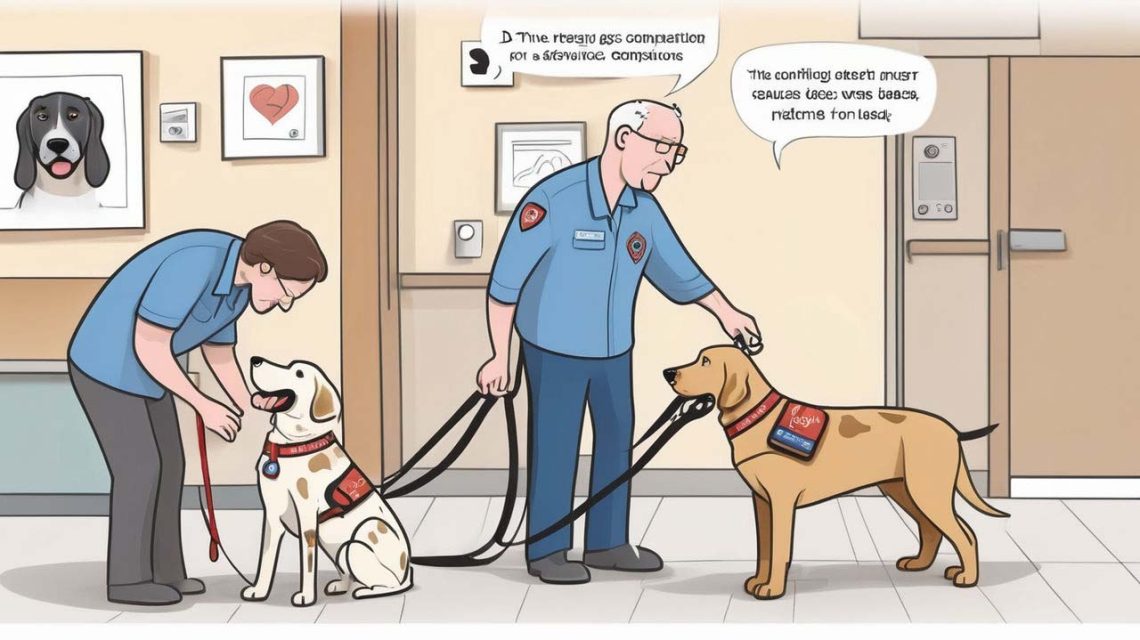For individuals who are deaf or hard of hearing, hearing service dogs provide invaluable support, alerting them to critical sounds and enhancing their independence and safety. These highly trained dogs learn to recognize essential sounds—like alarms, doorbells, and even the name of their handler—and respond by alerting their human companion. But their role extends beyond sound recognition; they offer companionship, reassurance, and a unique bond rooted in trust and support.
In this article, we’ll explore the essential roles of hearing service dogs, the rigorous training they undergo, and how they transform the lives of those they serve.
What Are Hearing Service Dogs?
Hearing service dogs are specially trained to alert their handlers to important sounds in their environment, providing a layer of safety and awareness that would otherwise be challenging for those who are hearing-impaired.
1. Safety and Independence
Hearing dogs act as the ears for their handlers, allowing them to safely navigate their world. By alerting to sounds like smoke alarms or approaching vehicles, these dogs offer a level of safety and independence that improves the quality of life for those who are hard of hearing.
2. Companionship and Confidence
These dogs do more than assist with hearing; they provide companionship and emotional support. The bond between handler and dog helps build confidence, allowing individuals to feel more connected to their surroundings and less isolated.

The Training Journey of Hearing Service Dogs
The journey to becoming a hearing service dog is intensive, requiring specific skills and rigorous training. Only the most attentive and responsive dogs complete the program.
1. Puppy Socialization and Basic Obedience
Training begins with socialization and basic obedience, where puppies are exposed to different environments and taught foundational commands.
- Socialization: Puppies are introduced to various environments, people, and sounds, helping them remain calm and adaptable in diverse settings.
- Basic Commands: Commands like “sit,” “stay,” and “come” form the groundwork, ensuring that each dog is responsive and obedient.
2. Sound Recognition Training
Once the dog masters basic obedience, they move on to the primary focus of hearing dog training—sound recognition. Trainers teach them to identify specific sounds and respond by alerting their handler.
- Key Sounds: Hearing dogs learn to recognize sounds such as doorbells, smoke alarms, telephones, and even the handler’s name. Each dog may also be trained for custom sounds depending on the handler’s needs.
- Alerting Behavior: Dogs are trained to respond to sounds by alerting the handler through a series of actions, such as nudging or pawing, guiding them toward the source of the sound.
3. Handler and Dog Bonding
Once the training is complete, the dog is matched with a handler. The bonding phase is essential, as it establishes trust and allows the handler and dog to learn each other’s cues.
- Team Training: The new team spends time together under the guidance of trainers to learn how to communicate and build a lasting partnership.
- Building Trust: Through practice and repetition, the dog learns to read their handler’s needs, and the handler learns to trust the dog’s instincts, creating a reliable team.
How Hearing Service Dogs Impact Daily Life
Hearing service dogs make an immense difference in the lives of their handlers, helping them feel safe, engaged, and empowered.
1. Improved Safety and Awareness
In cases of emergency, a hearing dog can be lifesaving. They alert their handler to sounds they may not otherwise hear, like fire alarms, providing critical assistance.
- Fire and Smoke Alarms: Hearing service dogs alert their handler when they hear a fire or smoke alarm, potentially saving lives in emergencies.
- Everyday Sounds: They also assist with daily sounds, such as a doorbell or someone calling the handler’s name, making daily interactions safer and easier to manage.
2. Enhanced Independence and Confidence
For many handlers, having a hearing service dog means they can live more independently, which boosts self-esteem and confidence.
- Public Environments: Hearing dogs help their handlers navigate busy environments, from grocery stores to workplaces, providing a sense of security.
- Building Routine Confidence: Knowing that their dog is attuned to their surroundings, handlers can enjoy daily activities without worrying about missing important sounds.
3. Emotional Support and Companionship
Hearing service dogs provide emotional support that is especially beneficial in reducing anxiety and increasing social interactions.
- Social Connection: These dogs act as a bridge to social connections, offering comfort and fostering conversations with others.
- Emotional Stability: The presence of a service dog provides companionship, reducing feelings of isolation and enhancing the handler’s emotional well-being.
Choosing and Training the Right Breeds for Hearing Service
Not all dog breeds are ideal for service roles. Hearing dogs must be alert, responsive, and trainable, making some breeds more suitable than others.
1. Labrador Retrievers
Known for their intelligence and calm temperament, Labradors are often chosen as hearing service dogs. Their trainability and adaptability make them excellent for this role.
2. Golden Retrievers
Golden Retrievers are naturally friendly, attentive, and reliable. They are easily trained and form strong bonds with their handlers, making them ideal for providing emotional support and alerting.
3. Cocker Spaniels and Poodles
For smaller breeds, Cocker Spaniels and Poodles excel in hearing service roles. Their keen senses, small size, and agility make them well-suited for alerting duties in various environments.
Supporting Hearing Service Dog Programs
Hearing service dog programs rely on community support to train and place these dogs with individuals who need them. Here’s how you can contribute:
1. Volunteer as a Puppy Raiser
Puppy raisers play an essential role in the development of future hearing dogs, helping socialize puppies and prepare them for training.
- Requirements: Puppy raisers must be committed to providing a safe, loving environment and helping puppies learn basic socialization skills.
- Training Support: Most organizations offer resources and training for volunteers, ensuring they know how to best prepare the puppy for its future role.
2. Donations to Support Training and Placement
Training a hearing service dog can cost thousands of dollars, and most organizations provide these dogs free of charge to qualified handlers. Donations are critical to covering training, medical care, and placement costs.
3. Spread Awareness and Advocate
By educating others about the role of hearing service dogs, you contribute to a better understanding of the unique support these animals provide. Advocating for access rights and understanding in public spaces also makes a positive impact.
FAQs About Hearing Service Dogs
What sounds can hearing service dogs recognize?
- Hearing service dogs are trained to respond to sounds such as doorbells, smoke alarms, telephones, and their handler’s name, among others. They can be trained for specific sounds based on the handler’s needs.
How long does it take to train a hearing service dog?
- Training typically takes 12-18 months, including basic obedience, sound recognition, and handler bonding.
Do handlers need to pay for a hearing service dog?
- Most programs provide dogs at little to no cost to the handler, thanks to donations and sponsorships.
Can hearing service dogs go everywhere with their handlers?
- Yes, under ADA laws, hearing service dogs are allowed in most public places, including restaurants, stores, and public transportation.
What if a dog doesn’t complete the training program?
- Dogs that do not complete training are often placed in loving homes as pets or serve in other service capacities.


